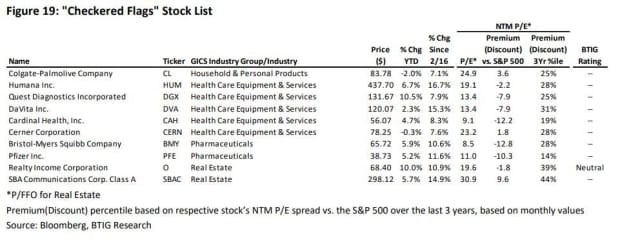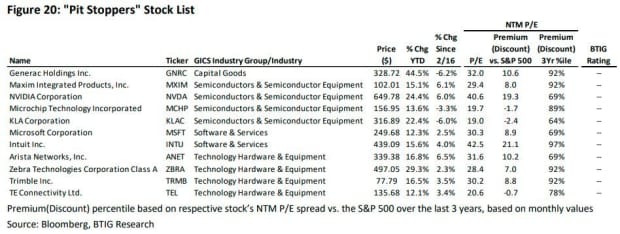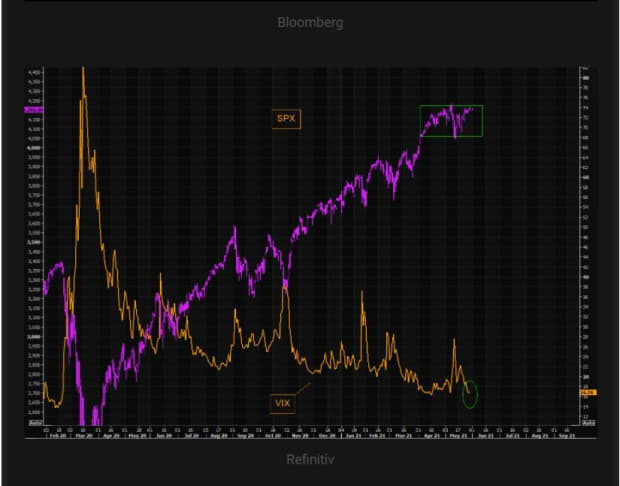This post was originally published on this site
Welcome to the month of June and a week that may wake investors from any early summer slumber, as it ends with a fresh update on U.S. jobs.
Stock futures are climbing after the long weekend, and as investors look past Friday’s data showing the Federal Reserve’s preferred measure of inflation surging to a rate not seen in 13 years.
Take note, the U.S. economy is running faster than an Indy 500 race, BTIG’s chief equity and derivatives strategist Julian Emanuel and equity strategist Michael Chu told clients in a note on Sunday. As evidence they cited second-quarter growth at 9%, “a flood of liquidity sending [an] update of the Fed’s reverse repo to all-time highs,” reopenings everywhere and numerous inflation signals.
“Despite the intensifying price and excess liquidity pressures and the historical evidence that sustained periods of Core PCE [personal consumption expenditures] over 2% have resulted in stock market declines averaging -1.6% per month, the Fed’s ‘Operation Grand Slam’ (the Fed’s balance sheet is approaching $8T) is engineering such inflation, and the Fed is going to get their wish for the next several months,” said the strategists.
In our call of the day, Emanuel and Chu offered up a “checkered flag” shortlist of stocks that can do well in this climate, and for these reasons: low price/earnings relative to their own three-year history vs. SPX
SPX,
leading since the mid-February inflation inflection, yet have lagged behind year-to-date:

On that buy list are consumer-products group Colgate-Palmolive
CL,
healthcare names Humana
HUM,
Quest Diagnostics
DGX,
DaVita
DVA,
Cardinal Health
CAH,
Cerner
CERN,
drug companies Bristol-Myers Squibb
BMY,
and Pfizer
PFE,
and real-estate investment trusts Realty Income
O,
and SBA Communications
SBAC,
As for the buyer beware or “pit stoppers,” list, the BTIG strategists noted these prospective underperformers that have the following factors in common: high price/earnings relative to the S&P 500 (top 50% of their own history over the last three years), lagged behind since the inflation inflection, yet have outperformed year to date:

Those names are manufacturer Generac Holdings
GNRC,
semiconductor names Maxim
MXIM,
Nvidia
NVDA,
Microchip Technology
MCHP,
and KLA
KLAC,
Microsoft
MSFT,
and Intuit
INTU,
in the software space, and Arista Networks
ANET,
Zebra Technologies
ZBRA,
Trimble
TRMB,
and TE Connectivity
TEL,
in the tech hardware and equipment space.
Emanuel and Chu see increased likelihood that markets — via lower stocks and higher bond yields — will force the Fed to address the “potential for inflation expectations to become unanchored,” amid inflation forecasts that have been undershooting. If the S&P 500 pushes into the 4,250 arena, they suggested using it as an opportunity to cut exposure to prospective underperformers or set some index option hedges.
Waiting for OPEC+ and data
U.S. stock futures
YM00,
NQ00,
are up, alongside European equities
SXXP,
and after a mostly positive day for Asian stocks. Gold
GCM21,
is further atop the $1900 an-ounce level, while the yield
TMUBMUSD10Y,
on the 10-year Treasury note is also rising. Surprisingly to some people, bitcoin
BTCUSD,
didn’t crash over the weekend.
Oil
CL00,
BRN00,
is a big mover, surging to its highest levels since October 2018 ahead of Tuesday’s meeting of the Organization of the Petroleum Exporting Countries and its allies.
Data on tap include the final Markit manufacturing purchasing managers index and the Institute for Supply Management’s manufacturing index, both for May, and construction spending for April.
Shares of movie-operator AMC Entertainment
AMC,
surged in premarket trading, after news it will sell $239 million in stock to Mudrick Capital Management.
Chinese electric-car maker NIO
NIO,
says semiconductor shortages weighed on May deliveries. Elon Musk, chief executive of industry giant Tesla
TSLA,
alluded to those pressures in a newish tweet:
The chart
Our chart of the day comes from the blogger behind The Market Ear, who highlights potential troubles from Asian COVID-19 outbreaks, including lockdowns in Malaysia, travel halted in China’s massive Guangzhou region, and struggles in Taiwan and Thailand to name a few. Of course, slow vaccine rollouts are an issue in some spots.
“The question is whether or not the current surge in Asian corona cases will spill over to new supply chain disruptions, which in turn risk feeding over to another pick up in global inflation,” said the blogger, who cautions markets aren’t pricing in the latter.
How to protect from a potential upset? The Cboe Volatility Index
VIX,
a popular gauge of future stock volatility, is well off its March highs. Long positions in the VIX are “starting to look like cheap hedges,” said the blogger. Here are three ways to trade that volatility via exchange-traded funds.

The Market Ear, Refinitiv, Bloomberg
Random read
A cool $1 million could get you handwritten notes by Isaac Newton, one of history’s greatest minds.
Need to Know starts early and is updated until the opening bell, but sign up here to get it delivered once to your email box. The emailed version will be sent out at about 7:30 a.m. Eastern.
Want more for the day ahead? Sign up for The Barron’s Daily, a morning briefing for investors, including exclusive commentary from Barron’s and MarketWatch writers.

